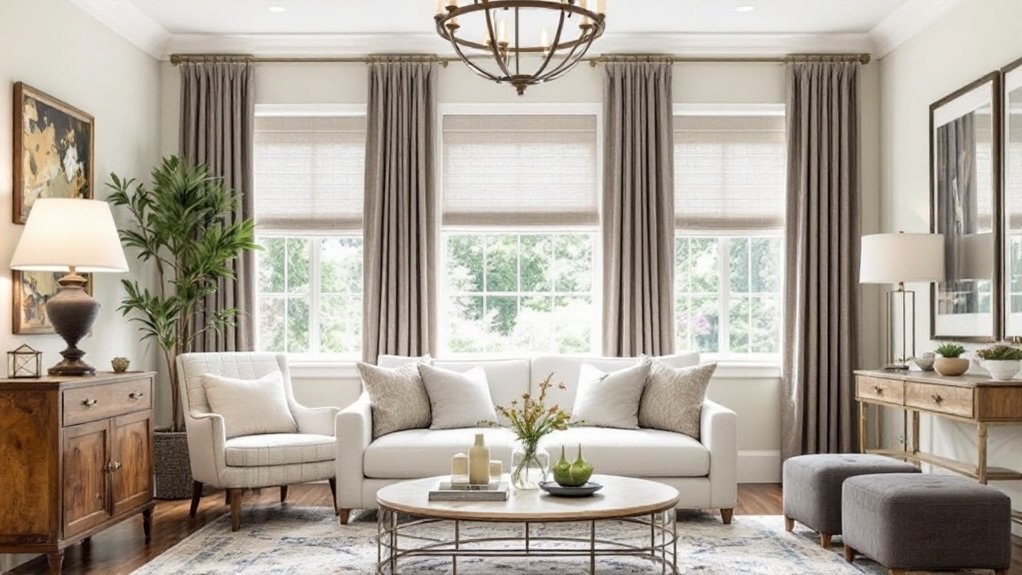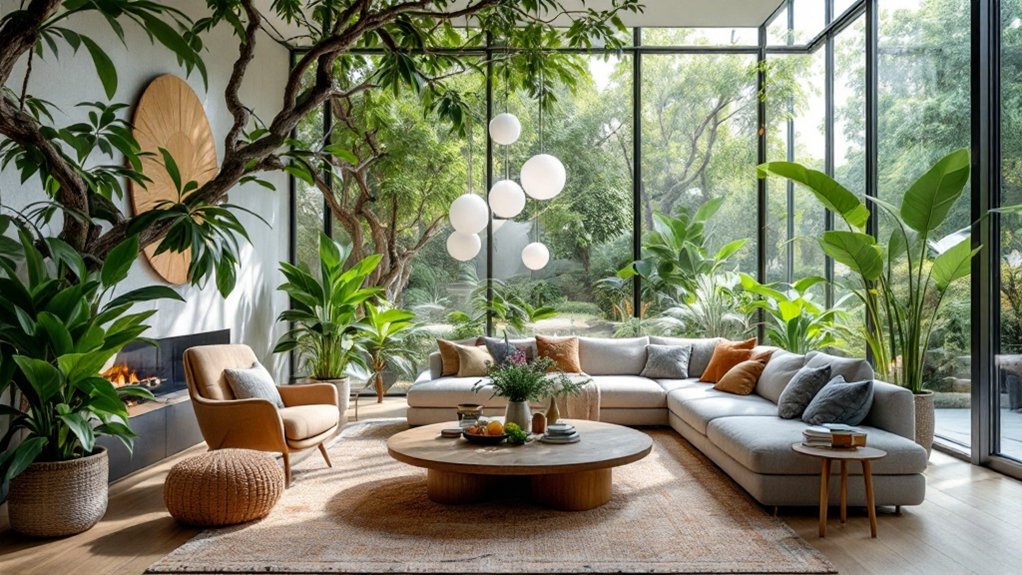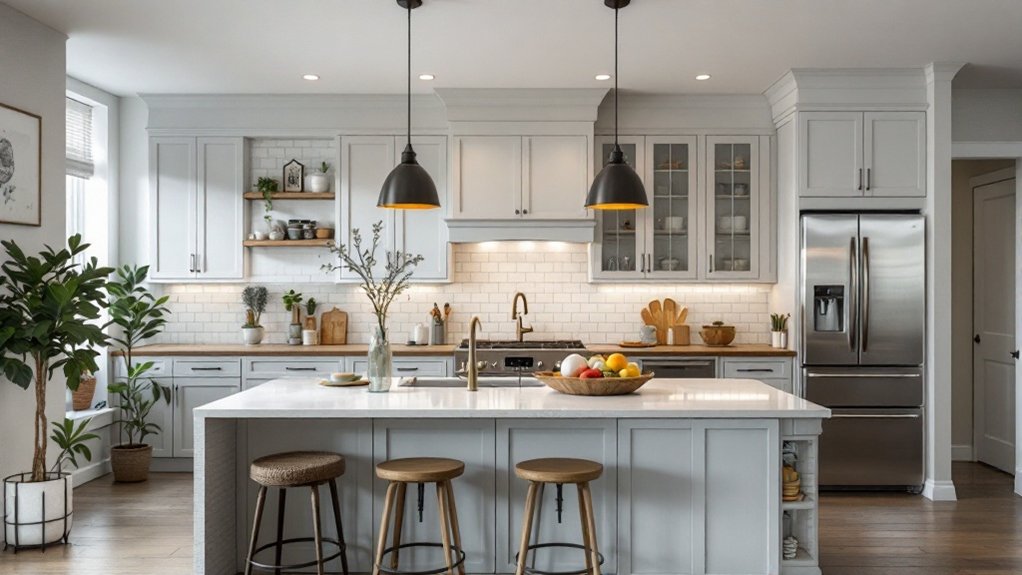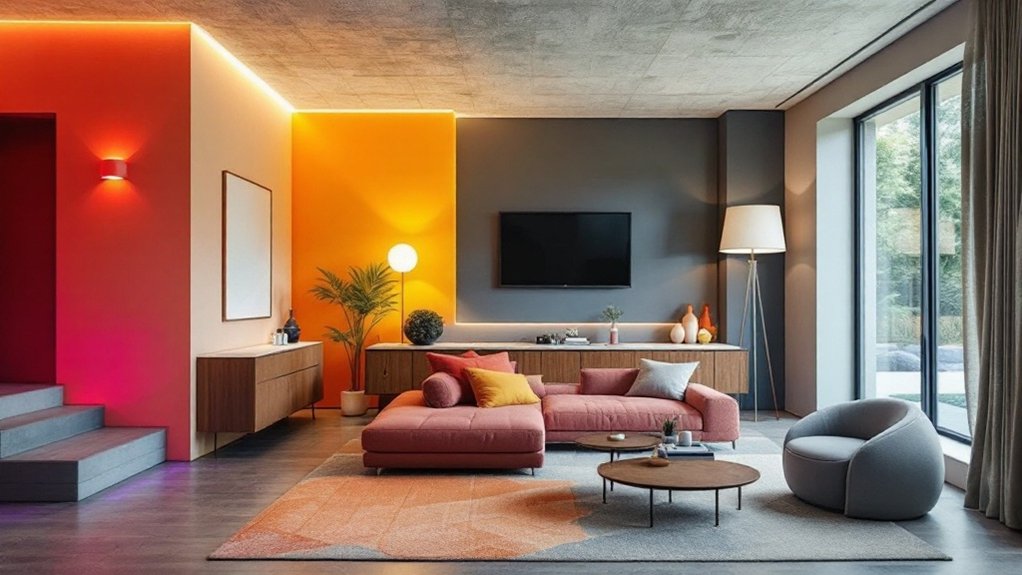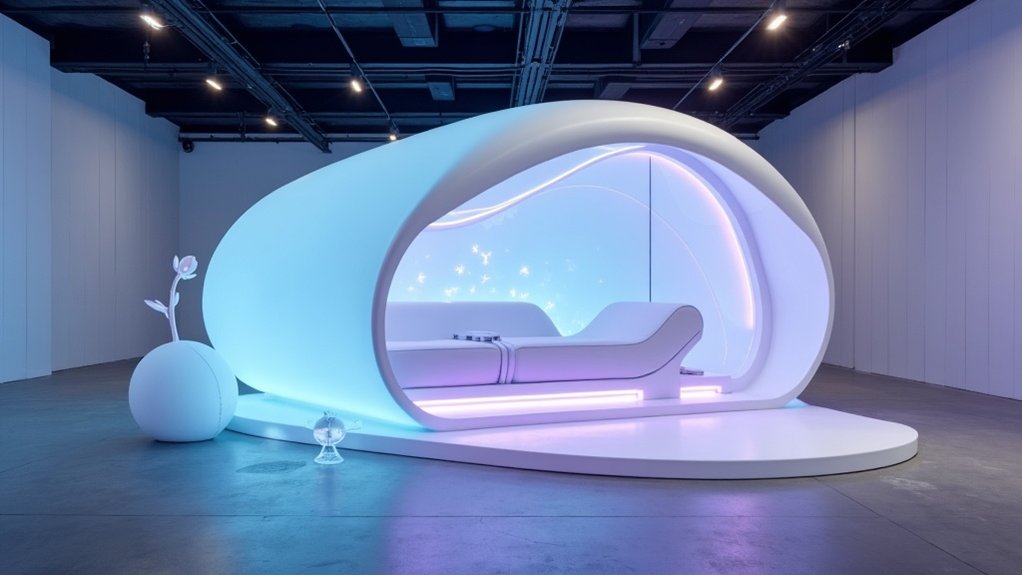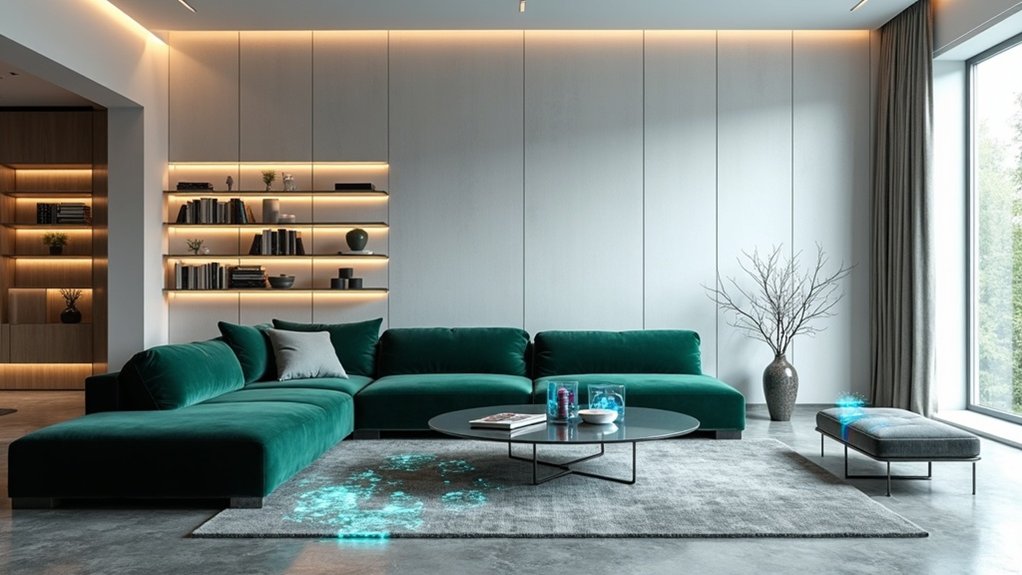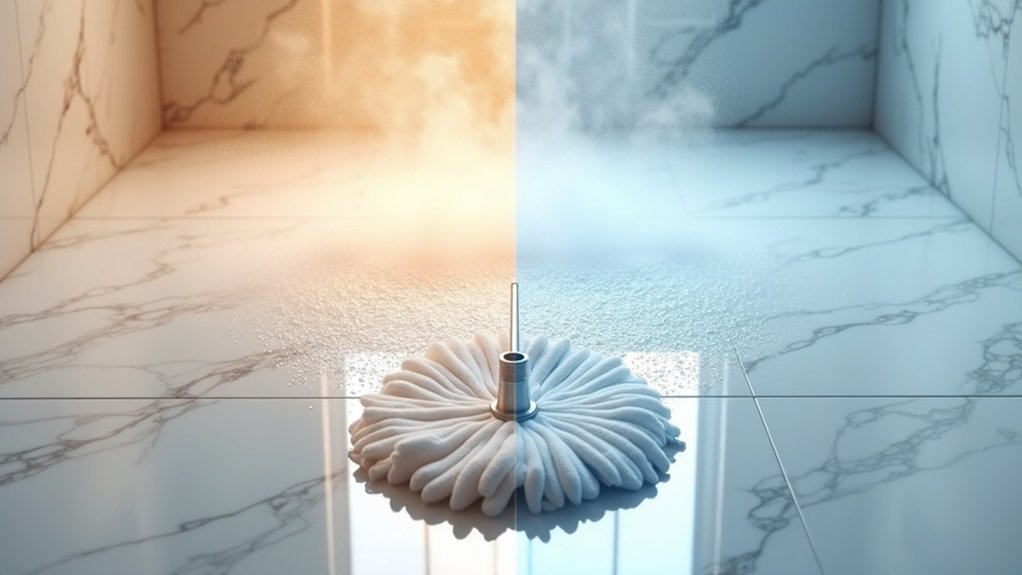Window treatments are undergoing a dramatic transformation driven by several key factors. Modern homes now adopt minimalist designs with clean lines and neutral palettes, while smart technology facilitates automated control through apps and voice commands. Sustainability plays a central role, with eco-friendly materials and energy-efficient options gaining popularity. The trend toward personalization allows homeowners to layer different materials and textures, creating unique combinations of style and function. This evolving environment of window treatments offers countless possibilities for enhancing any living space.
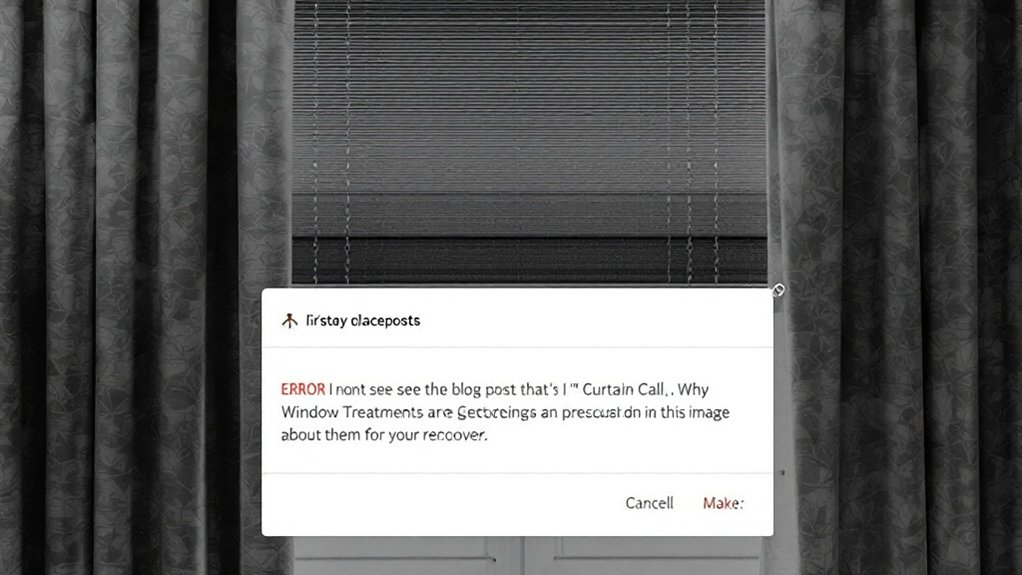
As window treatments evolve beyond mere functionality in 2025, homeowners are witnessing a remarkable transformation in how these fundamental design elements improve living spaces. The industry's shift toward minimalism and clean lines reflects a broader architectural trend, with streamlined designs and neutral palettes taking center stage. Sheer, flowing drapes enhance the space while creating a serene atmosphere. Pinch pleat profiles are making a stylish comeback in charming fabrics. Ripple fold drapery and sheer treatments now dominate the market, offering sophisticated simplicity that complements rather than competes with interior spaces.
The integration of smart technology has revolutionized how we interact with our window coverings. Motorized blinds and shades, complete with app connectivity and voice control capabilities, have become standard features in modern homes. These automated solutions not only boost convenience but likewise integrate seamlessly with home security systems, offering scheduled adjustments for ideal lighting and privacy throughout the day.
Environmental consciousness has sparked a surge in sustainable materials and manufacturing processes. Homeowners increasingly opt for eco-friendly options like bamboo, recycled fabrics, and sustainably sourced woods. Energy-efficient treatments help regulate indoor temperatures while reducing utility costs, reflecting a growing commitment to environmental stewardship in interior design.
Eco-conscious homeowners embrace sustainable window treatments, combining environmental responsibility with practical benefits through energy-efficient, earth-friendly materials.
The art of layering has emerged as a versatile solution for both practical and aesthetic concerns. By combining sheer panels with blackout curtains, homeowners can achieve precise control over light and privacy while creating visual depth. This approach has given rise to mixed material combinations that support both traditional and contemporary design aesthetics.
While minimalism remains prevalent, dramatic statements through bold patterns and luxurious fabrics have not lost their appeal. Floor-to-ceiling drapes in rich velvets and silks create striking focal points, while the resurgence of café curtains offers charming, practical solutions for spaces requiring partial coverage.
The industry's acceptance of personalization has made custom treatments more accessible, allowing homeowners to address unique window shapes and sizes with bespoke solutions that perfectly match their vision and needs.
Through these innovations, window treatments have transformed from simple privacy solutions into sophisticated design elements that improve both the function and aesthetics of modern living spaces.
Frequently Asked Questions
How Often Should Curtains and Drapes Be Professionally Cleaned?
Professional curtain and drape cleaning is recommended every 3-6 months, depending on several key factors.
High-traffic areas require quarterly cleaning, while low-traffic spaces can extend to six-month intervals.
Households with pets or smokers should opt for more frequent cleanings to maintain ideal indoor air quality.
Regular professional maintenance not only preserves fabric integrity but can additionally extend the lifespan of window treatments by removing embedded allergens and accumulated debris.
Can Smart Home Technology Be Integrated With Motorized Window Treatments?
Modern motorized window treatments seamlessly integrate with leading smart home systems like Amazon Alexa, Google Home, and Apple HomeKit through dedicated hubs or wireless connections.
Users can control their window coverings via smartphone apps, voice commands, or automated schedules, while in addition synchronizing them with other smart devices for thorough home management.
Major manufacturers including Somfy, Lutron, and The Shade Store offer compatibility with advanced automation platforms, enabling sophisticated features like daylight-triggered adjustments and security routines.
What Are the Best Curtain Materials for Noise Reduction?
Dense, tightly woven fabrics like velvet, suede, and polyester blends offer superior noise reduction capabilities.
Multi-layered designs incorporating these materials have demonstrated the ability to reduce sound transmission by up to 5 decibels in controlled testing environments.
Premium soundproof curtains, such as Moondream's three-layer system combining polyester, aluminum, and cotton, provide ideal acoustic blocking.
The key factors are material density, multiple layers, and proper installation from ceiling to floor for maximum coverage.
How Do You Measure Windows Correctly for Custom Window Treatments?
Accurate window measurements are essential for custom treatments.
For inside mounts, measure width at three points (top, middle, bottom), using the narrowest measurement, and height at three points (left, center, right), using the largest measurement.
For outside mounts, measure the desired coverage area and add three inches to each side.
Always measure to the nearest 1/8 inch using a metal tape measure, and record dimensions in width by length order.
Are There Eco-Friendly Alternatives to Traditional Curtain Materials?
Several eco-friendly alternatives to traditional curtain materials offer both style and sustainability.
Organic cotton eliminates harmful pesticides, while linen and hemp require minimal water and chemicals during production.
Recycled polyester curtains, made from post-consumer plastic bottles, reduce landfill waste.
Tencel, produced from sustainably sourced wood pulp, utilizes closed-loop processes.
Furthermore, upcycled fabrics repurpose existing materials, contributing to waste reduction while maintaining aesthetic appeal and functionality.
